Dan Morey Photo
A ruin along the Appian Way.
Lost in the Catacombs of Rome
by Dan Morey
Begun in 312 BC, the Appian Way once stretched from Rome all the way to Brindisi on the Apulian coast. Over the centuries, it acquired a rather grim history, serving as a military artery during the Samnite Wars and, more recently, World War II.
The road’s most famous bloodbath occurred in 71 B.C. after the insurrectionist slave army of Spartacus was defeated at Senerchia. Instead of returning the 6,000 captured rebels to bondage, the Roman army crucified them along the Appian Way. Add to this the mausoleums and early Christian catacombs dispersed over its length, and you have a pretty depressing highway.
“Think about it,” I said to my mother as we began our walk at the Via Appia Antica, a preserved section of the historic road. “If we’d come through here 2,000 years ago there would’ve been crucified slaves everywhere.”
“Yes, Daniel.”
“Stinking to high heaven and dripping gore.”
“Daniel, please.”
“What?”
“Look around. There are trees and birds and beautiful things everywhere.”
She was right. The Appian Way, despite its grisly past, is extraordinarily lovely. Tall cypresses shade the chariot-rutted road, while ruined walls and mileage markers evoke ancient times.
We stopped at the tomb of Cecilia Metella, a wide, round tower. Metella was a rich patrician, as were all the Romans memorialized along the Appian Way. This was not the case for Christians, who were buried in warren-like catacombs as deep as 65 feet below the earth. Altogether, there are about 40 of these necropoli in the area, with over 375 miles of tunnels.
We went to San Sebastian first, and found the catacombs closed. The basilica was open though, so we went inside. San Sebastian is one of seven original pilgrimage churches in Rome, and the relic chapel was crawling with devout pilgrims. Most of them were looking at the footprints that Jesus (post-resurrection) left on the Appian Way when Peter famously asked him, “Domine, quo vadis?” or “Lord, where are you going?”
A little church, aptly named Chiesa del Domine Quo Vadis, was built on the site of this encounter, but the footprints are kept in San Sebastian. A young novice with bangs and a button nose was crossing herself in front of them when we entered the chapel. After she’d finished, Mother attempted to ask her when the catacombs re-opened: “Dov-ay catacom-ay, um, open-ay?”
The novice laughed and said, “They’re closed for the day.”
“You speak English!” said Mother.
“Sure, I’m from Texas. There’s a whole group of us. We’re on pilgrimage.”
“Did you get shut out of the catacombs too?” I said.
“No, we did the catacombs at St. Callixtus. We’re here for the footprints and the Sebastian statue. Did you see Sebastian?”
She took us to another chapel, which contained a marble sculpture of St. Sebastian. He was laid out on the floor, with arrows sticking in his gut and thigh.
“He didn’t actually die from the arrows,” the novice told us. “Irene brought him back to her house and healed his wounds. He wasn’t martyred until later, when he shouted criticisms at Emperor Diocletian.”
“What’d he say?”
“I don’t know. Probably that Diocletian should stop killing so many Christians. They clubbed him to death, and threw him in a sewer.”
She led us back to the relic chapel and pointed out a wooden shaft in a gold frame. “That’s one of the original arrows that pierced St. Sebastian.”
“Wow,” said Mother.
“Amazing,” I said. “But what about the catacombs?”
“You’re not missing anything in the San Sebastian catacombs. The ones at St. Callixtus are way bigger. Plus, did you know sixteen popes were buried there? And lots of martyrs too. You’ve heard of St. Cecilia, right? Well, she was buried there and later removed, and now there’s a statue marking the spot.”
“What happened to her body?” said Mother.
“There aren’t any bodies in the catacombs now. They took them out a long time ago. St. Cecelia is in the Church of Santa Cecilia in Trastevere. Have you been there?”
“I think we walked past it,” I said.
“Well go in next time. You’ll see the same statue as in the catacombs, except it’s the original. There’s just so much to see in Rome.”
“How old are you?”
“Eighteen.”
“And you know all this?” said Mother. “You’re a very smart girl.”
“Thanks,” she said, blushing. “But there’s really a lot more. St. Callixtus was the official Christian cemetery in Rome. That’s why so many important people got buried there. You’ve heard of Pope Zephyrinus, right? Well, Pope Zephyrinus put Callixtus in charge of the cemetery, and after Zephyrinus died Callixtus became pope and after that—oh! My group’s leaving! Sorry, I have to go!”
She ran off down the nave, and we followed her out, taking the Appian Way toward St. Callixtus.
“What a cutie,” said Mother.
The catacombs of St. Callixtus were shut for lunch, so we sat down on the grass behind an old storage building and ate our sandwiches. The grounds were very neat with clipped hedgerows and uniformly spaced cypress trees. Out in a field, beside a remnant of some long forgotten tomb, ten or twelve nuns, all in blue, sat in a circle and prayed. When the prayer was finished, one of them took out a loaf of bread and passed it around.
Mother leaned back against the shed and sighed. “It’s perfect. This is what I think of when I think of Italy.”
Someone in the ticket area shouted unintelligibly.
“The catacombs must be open,” said Mother. “C’mon!”
We bought tickets for the English tour and waited on a bench under some palm trees to be summoned. Japanese was the first language called, followed by German, and then Italian. Each group met up with a guide, who led them into the catacombs.
“We’ll be next,” I said, standing.
“Italiano!” yelled a guide.
“What? The Italians just went.”
“There’re a lot of them,” said Mother.
When the catacombs reached capacity, they stopped calling groups. A half hour later the Japanese resurfaced and the tours started up again.
“Italiano!”
I scanned the waiting area, incredulous. “There are plenty of pasties here. Are they all German, or what?”
“Deutsch!” said a guide, answering my question.
“It’s an Axis conspiracy. These fascists think the war’s still on.”
A red-cheeked Australian overheard me and took up the cause, shouting: “Ow ‘bout the Allies? Oi!”
Detecting some semblance of their language in this outburst, an Englishman and his wife came over and joined our ranks. “I think we’d better make a complaint,” he said, “or we’ll be standing here till Boxing Day.”
The Australian looked like he was about to pull a knife from his boot and charge the ticket counter. “I’ll give ‘em a bloody complaint,” he said.
The Englishman and I were poised to restrain him, when a yellow-shirted guide appeared at the entrance to the catacombs and exclaimed, “English!” Then, almost as an afterthought, “Sorry!”
We lined up behind her, preparing to mobilize. She counted us and asked if anyone was claustrophobic or faint of heart or too infirm to climb steep stairs. There were about fifteen of us, all in good health, or so we claimed.
“Okay,” she said. “Let’s go!”
The catacombs of St. Callixtus are over 60 feet deep and 12 miles long. There are four levels of dark, narrow passages, so it’s a good idea to stick close to your guide, which we did, for roughly ten minutes. I’d been listening patiently as she recited fourth-century mortality statistics and described the properties of tufa rock, when I spotted St. Cecelia in the next room. She was lying on a marble slab in a brick niche.
“C’mon,” I said to Mother.
We went into the crypt. The Cecilia sculpture was illuminated by two small lamps, and looked very much like a dead body that had just been tossed to the floor. Though she lies on her side, her shrouded face is twisted awkwardly into the slab, revealing a large gash on the back of her neck.
“Well, I think we know how she was martyred,” I said.
On the wall are some very early eastern-style frescos depicting Jesus, St. Urban and a haloed Cecilia, costumed like a Byzantine princess. The paint has flaked off over the years, depriving Cecilia of legs and a hand, and there isn’t much left of poor Urban at all. Jesus has fared better, suffering only a chapped beard and pocky face.
“We better go,” said Mother, nervously.
When we got back to the first burial gallery, our group had departed. The room was cold and musty.
“What’ll we do?” said Mother.
“Wait.”
To pass the time, we studied the empty tombs slotted in the walls. Each had once contained a deceased Christian, wrapped in a sheet, and sealed off for eternity. Goths pillaged St. Callixtus in the sixth century, and by the Middle Ages the catacombs were all but forgotten. After their rediscovery in seventeenth century, unscrupulous treasure-hunters took over where the barbarians left off, gathering up human remains and selling them as relics.
“Look!” said Mother.
She was examining a faded symbol carved in stone.
“Could be a dove, or a peacock, or a phoenix,” I said.
“It doesn’t look like a bird to me.”
“Could also be bat shit.”
We rooted around in the dirt for a while, playing Indiana Jones, but Mother was worried. “They aren’t coming back, are they?”
“No. We’ll have to guess which way they went and try to catch up. Door number one, or door number two?”
“Numero uno,” said Mother.
After a hundred yards of pitch-black passageway, we realized we should’ve gone with numero due.
“Where are all the other groups?” said Mother.
“God knows. These tunnels are endless. Half a million people were buried down here.”
The air grew heavy and moist as we penetrated deeper into the subterranean maze.
“What if we get locked in?” said Mother. “I’m scared.”
I heard faint voices, far off in the darkness.
“People!” cried Mother. “Living people!”
I grabbed her wrist and we raced down the tunnel, kicking up clouds of dust. At its terminus we ran into a bunch of Japanese climbing a staircase.
“Wrong people,” I said.
We turned right from there, then left, and wound up in the Crypt of the Popes. Nine pontiffs and eight bishops were laid to rest here in the third century. After the Roman persecutions ceased, the crypt was converted into a prayer chapel with frescoes and mosaics and Corinthian columns. It became a favorite shrine for pilgrims until the Goths showed up and started smashing things. When the bodies of the Church fathers could no longer be protected, they were transferred to basilicas in Rome.
“How many of these popes were martyrs?” said Mother, running her fingers over the ancient brickwork.
“Most of them, I think. Being the pope wasn’t such a cushy job back then.”
I opened the guidebook and squinted to read in the dim lamplight: “St. Antherus—died in prison. St. Fabian—beheaded during the persecution of Decius. St. Sixtus II—apprehended at a liturgy in the catacombs, also beheaded.”
We went into the adjoining room, where we were pleasantly reunited with St. Cecilia.
“We’re staying right here,” I said. “There’s no way that guide is leaving the catacombs without popping in on Cecilia.”
A few minutes later we began to hear the muffled echo of conversation. It got closer and closer, and then suddenly our guide was backing into the crypt, telling the group the story of St. Cecilia. She turned, saw us, said “Oh, hello!” and continued her whispered lecture.
It seems that Cecilia was a Christian of noble birth who married a rich pagan named Valerian and converted him to her religion. Like many recent converts, Valerian was a bit overzealous; he recruited his brother, and together they did a lot of ostentatious almsgiving in the name of Christ. This attracted the attention of the local prefect, Tercius Almachius, who, in the year 230, condemned all three of them to death. Cecilia’s execution (by steaming) failed, so he ordered her beheaded. It took three whacks and three days of bleeding out before she finally expired. Because she was singing praises to the Lord as she passed, Cecilia became the patron saint of music.
“Her house was in Trastevere,” said the guide, “and she bequeathed it to the Church. When the basilica of Santa Cecilia was built there, her remains were removed from the catacombs and taken home.”
The guide led us through a few more chambers, translating the Greek and Latin inscriptions on the walls. When the tour ended, we said goodbye to our English and Australian friends, and hit the Appian Way beneath the westering sun.
“Those poor people,” said Mother. “Think how they had to suffer just to be Christians.”
The trees along the roadside were as beautiful as ever, but I was beginning to see dead slaves again.
About the author:
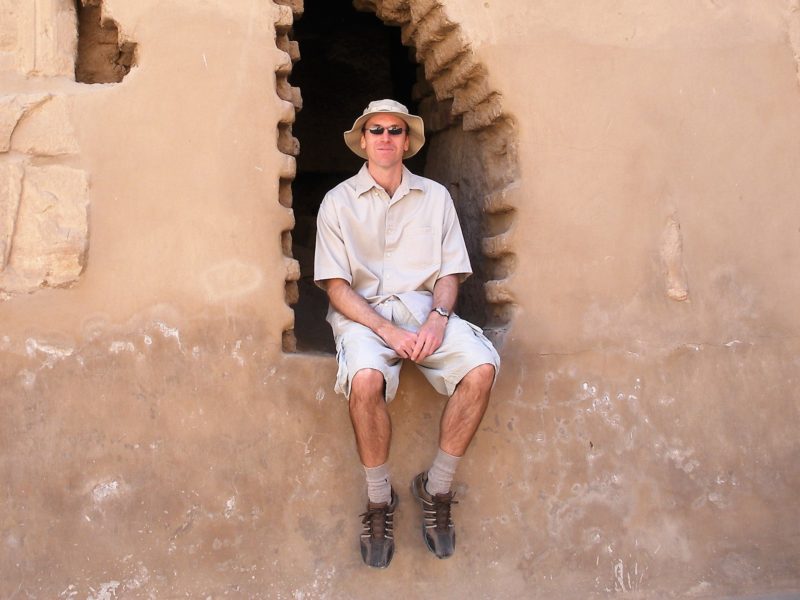 Dan Morey is a freelance writer in Pennsylvania. He’s worked as a book critic, nightlife columnist, travel correspondent and outdoor journalist. His writing has appeared in Hobart, Cleaver Magazine, McSweeney’s Quarterly and others. He was nominated for a Pushcart Prize in 2017. Find him at danmorey.weebly.com.
Dan Morey is a freelance writer in Pennsylvania. He’s worked as a book critic, nightlife columnist, travel correspondent and outdoor journalist. His writing has appeared in Hobart, Cleaver Magazine, McSweeney’s Quarterly and others. He was nominated for a Pushcart Prize in 2017. Find him at danmorey.weebly.com.
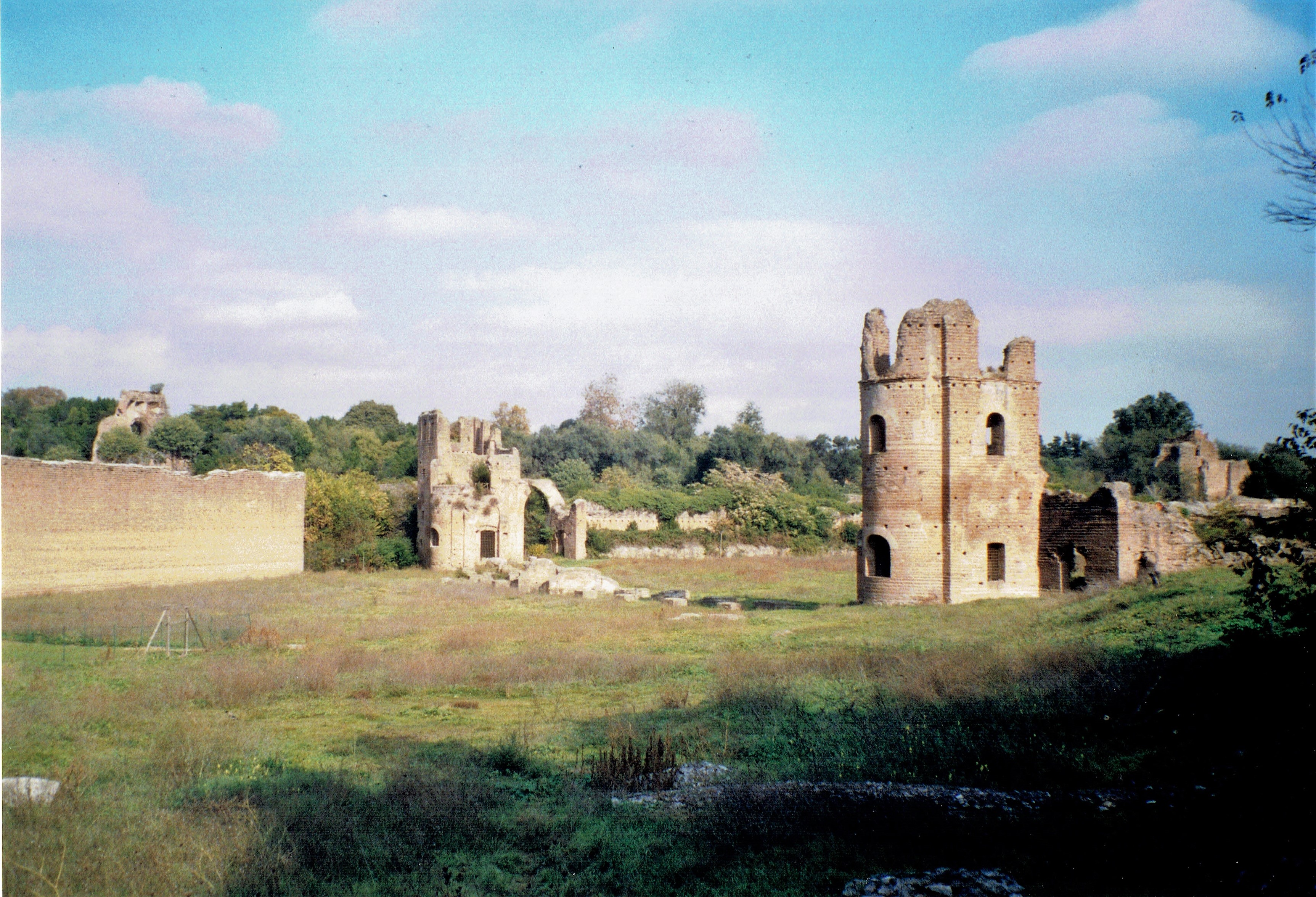
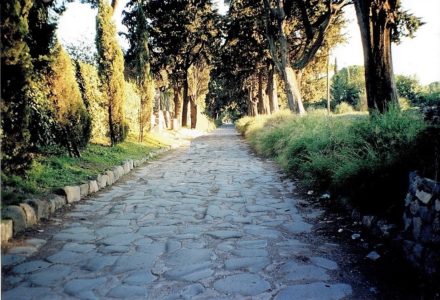
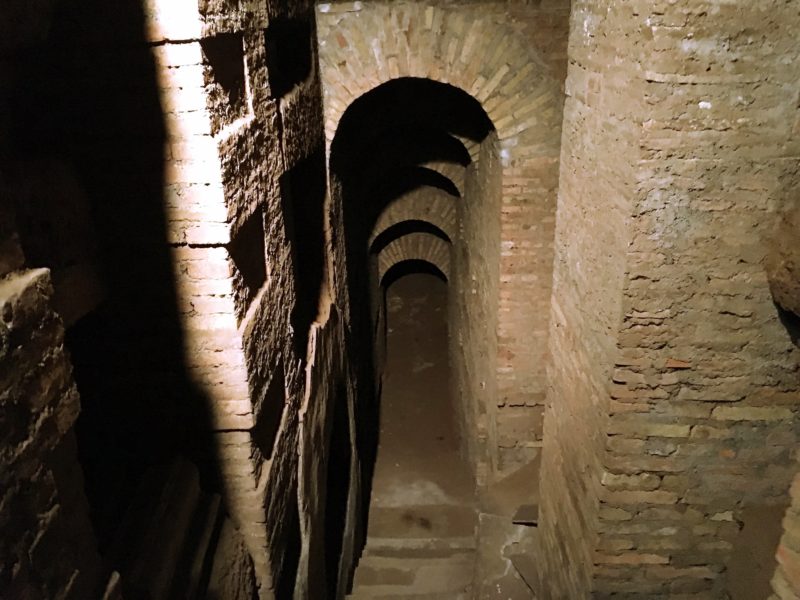
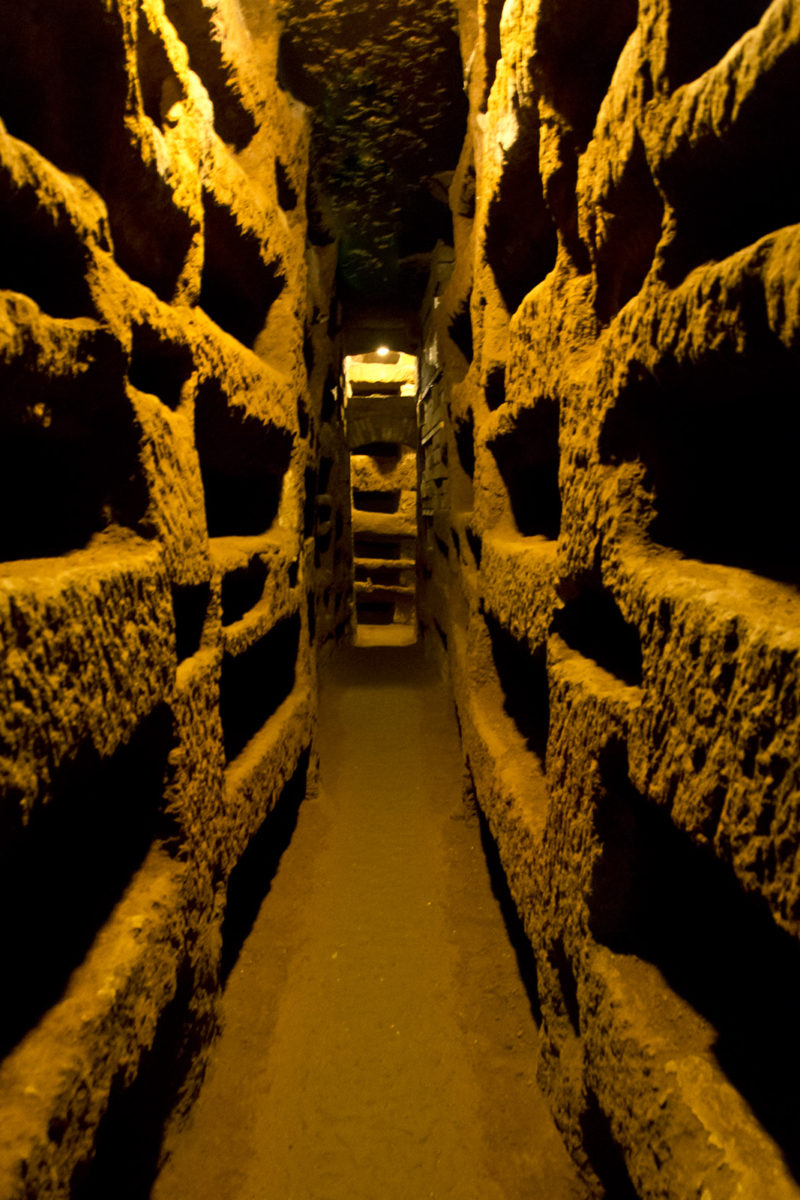
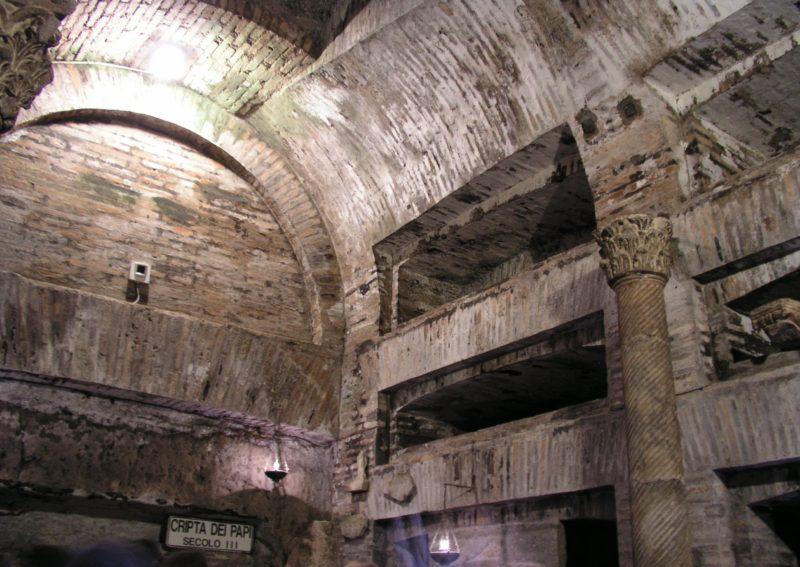
Recent Comments